
Research Article
Ann Depress Anxiety. 2016; 3(1): 1075.
Antidepressant-Like Potentials of Vernonia Amygdalina (Asteraceae) in Laboratory Mice and the Implication of the Monoaminergic Systems
Onasanwo SA, Aitokhuehi NG and Faborode SO
Department of Physiology, University of Ibadan, Nigeria
Corresponding author: Onasanwo SA, Neurosciences and Oral Physiology Unit, Department of Physiology, Faculty of Basic Medical Sciences, College of Medicine, University of Ibadan, Nigeria
Received: April 05, 2016; Accepted: May 12, 2016; Published: May 17, 2016
Abstract
Vernonia amygdalina commonly called bitter leaf, belongs to the family Astaraceae, and has been reported to be used locally in the treatment of psychiatric challenges. However, dearth work has been reported on anxiety and no work has been reported on depression. This study was therefore designed to investigate the antidepressant activities of Vernonia amygdalina and its probable mechanism of activities in mice.
The antidepressant-like potentials of VA (50-200mg/kg) was explored in Forced Swimming Test (FST), Tail Suspension Test (TST), reserpine-induced models and Open Field Test (OFT). Mice were pre-treated with graded doses VA (50-200 mg/kg) and imipramine (60mg/kg). And, also mice were pre-treated with monoamine receptor blockers: metergoline (5-HT2), prazosin (alpha-1- adrenoceptor) and sulpiride (D2) before VA (100mg/kg) was administered to elucidate the mechanisms involved in it antidepressant-like effects using the TST.
Vernonia amygdalina (100mg/kg and 200mg/kg) were found to be significantly increase mobility as when compared with control in FST and TST model. 100mg/kg and 200 mg/kg of VA reduced the ptosis in reserpine-induced depression and 200 mg/kg of VA was able to increase the temperature in mice in reserpine-induced depression. VA was seen to be mediated through alpha- 1-adrenergic receptor, dopamine D2 receptor and 5-HT2 receptor as there was significant increase immobility when compared to 100 mg/kg of VA.
This study showed that Vernonia maygdalina may possess antidepressantlike effects in FST, TST and reserpine-induced depression models which may be mediated through serotonergic, nor-adrenergic and dopaminergic system.
Keywords: Vernonia amygdalina; Depression; Forced swimming test; Tail suspension test; Monoamines
Introduction
Depression is defined by the World Health organization [1] as a common mental disorder, presented by depressed mood, loss of interest or pleasure, feelings of guilt or low self worth, disturbed sleep or appetite, feelings of tiredness and poor concentration. At its worst, depression can lead to suicide. Almost one million lives are lost yearly due to suicide, which translates to 3,000 suicide deaths every day [1].
The widely accepted theory of depression is the decreased level of major neurotransmitters: serotonin, noradrenaline, and dopamine in the synapse. Antidepressants increase the level of these neurochemicals at the synaptic cleft. Conventional antidepressants have major setbacks which include slow onset of action, side effect. Hence, the interest in the use alternative medicine and to tap the untapped source of compound that might serve as a template for the development of antidepressant drugs is in the rise globally.
Vernonia Amygdalina (VA), a member of the Asteraceae family, is a small shrub that grows in the tropical Africa. V. amygdalina typically grows to a height of 2-5 m. The leaves are elliptical and up to 20 cm long. Its bark is rough [2]. V. amygdalina is commonly called bitter leaf in English because of its bitter taste. Locally, VA is called ewuro (Yoruba), onugbu (Igbo), chusar-doki (Hausa), oriwo (Edo) [3,4].
Vernonia Amygdalina has been shown to possess antioxidant properties and also contain chemical composition such as flavonoids, saponins, terpenes, phenolic acids and others [5]. VA has also been shown to possess anxiolytic property in elevated T-maze and holeboard apparatus [6]. This study therefore designed to study the effects of Vernonia amygdalina on depression in laboratory mice and also focusing on the roles of monoaminergic systems.
Materials and Methods
Plant material and extraction procedure
Fresh leaves of VA were collected within the University of Ibadan, Ibadan, and Oyo State, Nigeria. The identification and authentication of the plant was done at the herbarium section of the Forest Reserve Institute of Nigeria (FRIN) Ibadan, Oyo State, Nigeria by Mr. A, Adeyemo with the FHI No.: 110415.
Fresh leaves of V. amygdalina were collected, air-dried and pulverized. The pulverized V. amygdalina (1.2kg) was soaked in 4.5 liters of methanol for 72 hours. The mixture was filtered and the filtrate was concentrated using a rotary evaporator at a maximum temperature of 45°C to obtain the crude aqueous extract of the plant. Further drying of the extract was carried out using the freeze-dryer to obtain semi-solid extracts. The total dried methanol extract obtained from the leaf of V. amygdalina was 82.4g. The semi-solid paste of VA was further fractioned into n-hexane and ethyl acetate fraction, dried and kept in the desiccators for further use. The ethyl acetate fraction of VA was subsequently reconstituted in distill water at appropriate concentration. The extract was dissolved in distill water and was administered orally.
Experimental animals and treatment
Mice weighing 18–25g were used in this study and were obtained from the Laboratory Animal Centre of the College of Medicine, University of Ibadan, Nigeria. The animals were kept in a conducive laboratory environment with a 12-h cycle starting and fed with standard rodent pellet and water ad libitum. Animals were treated with any of saline (10ml/kg), methanol and ethyl acetate extract of Vernonia amygdalina (50mg/kg, 100mg/kg, or 200mg/kg), or standard drugs (imipramine, 60mg/kg) before subjecting them to their separate models.
The experimental procedures adopted in this study were in accordance with the United States National Institutes of Health Guidelines for Care and Use of Laboratory Animals in Biomedical Research [7].
Antidepressant activity
Forced swimming test: This experiment was done as described by Porsolt and co-workers [8]. The apparatus consisted of a clear Plexiglas cylinder (20 cm by 12 cm) filled to a 15 cm depth with water at 25±1oC. Experimental animals were pre-exposed to swimming environment for fifteen minutes each, 24 hours prior to the test. Each mouse was judged to be immobile when it ceases struggling and remained motionless in the water, making only those movements necessary to keep its head above the water. A decrease in the duration of immobility was an indication of anti-depressant-like effects [8].
Tail suspension test: The Tail Suspension Test (TST) was performed as described by Steru and co-workers [9]. Mice were individually suspended 60cm above the floor on a metal rod with an adhesive tape placed 1cm away from the tip of the tail. Animals were suspended for a total of 6 minutes and the duration of Immobility was recorded during the last 5 minutes of a 6-minute test using stop watch. Mice were considered immobile only when they hang passively and are completely motionless.
Reserpine-Induced depression: Five groups of mice received Reserpine (60mg/kg, i.p) 1 hour after the respective drugs/extract administration. Mice were observed for the presence of diarrhea and ptosis at 60, 90, 120, and 150 minutes, while for hypothermia at 1, 2, 3 & 4 hours after respective reserpine injection. Diarrhea was scored using 1, 2 and 3. (1= solid feces; 2= semi-solid feces; and 3= watery feces). Ptosis was scored using 1, 2 and 3. (1= eyes-open wide; 2= halfeye closure; and 3= Full-eyes closure). The temperature of mice was taken using a digital thermometer and was recorded.
Open field test: In order to eliminate any doubt of locomotive effect in the antidepressant-like activities of VA, mice were administered with same the various selected doses of drugs/extract, their locomotive activities (line crossing) was evaluated in open field apparatus. The test apparatus was made of wood 50cm in length, 50cm in width, and 25cm in height. The plain floor of the box was divided into 8cm, with 16 squares on it. A 20 W white bulb illuminated the apparatus. Mice were placed into the centre and allowed to explore the apparatus for 5 minutes. After the 5 minute test, the ambulation time was recorded and mice were returned to their home cages and the open field was cleaned with 10 % ethanol to remove any odour of the previous animal and permitted to dry between tests.
Statistical analysis
The results obtained were expressed as mean ± S.E.M. Variance was analyzed using One-way Analysis of Variance (ANOVA), followed by Newman– Keuls’ multiple comparisons test. P < 0.05 was considered to be statistically significant. All statistical analyses were done using (Graph-Pad Prism Software, San Diego, CA, USA).
Results and Discussion
Effect of methanol extract of Vernonia amygdalina on mice in Forced Swimming Test
Figure 1 shows that 50mg/kg of MEVA reduced immobility with no significance in comparison with control. However, treatment with 100mg/kg, 200mg/kg of MEVA and Imipramine 60mg/kg showed a significant reduction in immobility time (p<0.05) when compared to the control group.
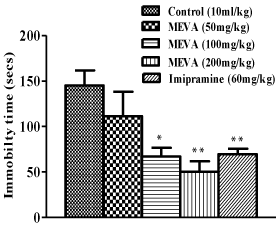
Figure 1: Effect of Methanol Extract of Vernonia Amygdalina, MEVA
administration on immobility time in Forced Swimming Test (FST). The results
are expressed as means ± SEM (n=6). Data were analyzed using Oneway
ANOVA followed by Newman-Keuls’ post hoc test. p<0.05, p<0.01
compared with the control.
Effect of methanol extract of Vernonia Amygdalina (MEVA) and Ethyl Acetate fraction of Vernonia Amygdalina (EAVA) on mice in tail suspension test
As shown in Figure 2, 100mg/kg of MEVA, 100mg/kg of EAVA, 200mg/kg of MEVA, 200mg/kg of EAVA and Imipramine 60mg/ kg showed a significant reduction in immobility time (p<0.001, p<0.001, p<0.01, p<0.05 and p<0.001 respectively) when compared to the control group. However, 50mg/kg of MEVA and 50mg/kg of EAVA could not significantly reduce immobility. Also, there was no significant difference between the same doses of fractions of MEVA and EAVA.
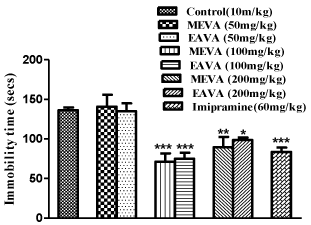
Figure 2: Effect of Methanol Extract of Vernonia Amygdalina (MEVA),
Ethyl Acetate fraction of Vernonia Amygdalina (EAVA) and Imipramine on
immobility in Tail Suspension Test in mice. The results were expressed as
means ± SEM (n=6). Data were analyzed using one-way ANOVA followed by
Newman-Keuls’ post hoc test. p<0.05, p<0.01, *p<0.001 when compared
with the control.
Effects on Ethyl acetate fraction of Vernonia amygdalina in Reserpine-induced diarrhea
As Table 1, at 60 minutes, Ethyl Acetate fraction of Vernonia Amygdalina (EAVA) (50mg/kg, 100mg/kg and 200mg/kg) and imipramine (60mg/kg) were significantly different (p<0.05) when compared with control. At 90 minutes, EAVA at 100mg/kg, 200mg/ kg and Imipramine 60mg/kg showed a significant difference when compared to control (p<<0.01, p<0.05, p<0.05 respectively). At 120 minutes, EAVA at 100mg/kg, 200mg/kg and Imipramine (60mg/kg) showed a significant difference when compared to control (p<0.01, p<0.05, p<0.01 respectively). At 150 minutes, EAVA at 100mg/kg, 200mg/kg and Imipramine (60mg/kg) showed a significant difference when compared to control (p<0.01, p<0.05, p<0.01 respectively) Figure 3.
Group
Dose
60mins
90mins
120mins
150mins
Control
10ml/kg
2.8±0.20
2.8±0.20
3.0±0.00
3.0±0.00
EAVA
50mg/kg
1.0±.0.00*
2.0±0.45
2.0±0.45
2.0±0.45
EAVA
100mg/kg
1.0±0.00*
1±0.00**
1.2±.0.20**
1.2±0.20**
EAVA
200mg/kg
1.6±0.40*
1.6±0.40*
1.6±0.40*
1.6±0.40*
Imipramine
60mg/kg
1.2±0.24*
1.4±0.24*
1.4±0.24**
1.4±0.24**
Table 1: Effect of Ethyl Acetate fraction of Vernonia Amygdalina, EAVA administration in Reserpine-induced diarrhoea. The results are expressed as means ± SEM (n=6). Data were analyzed using One-way ANOVA followed by Newman-Keuls’ post hoc test. *p<0.05, **p<0.01 compared with the control.

Figure 3: Effect of Ethyl acetate fraction of Vernonia Amygdalina, EAVA
administration on immobility time in Tail Suspension Test (TST). The results
are expressed as means ± SEM (n=6). Data were analyzed using One-way
ANOVA followed by Newman-Keuls’ post hoc test. p<0.01, *p<0.001
compared with the control.
Effect of Ethyl acetate fraction of Vernonia amygdalina in Reserpine-induced ptosis
Table 2, shows that EAVA (100mg/kg, 200mg/kg) and Imipramine (60mg/kg) had significant (p<0.05) differences at 90 and 120 minutes when compared with control. Also imipramine (60mg/kg) had a significance (p<0.05) at 150 minutes when compared to control.
Group
Dose
60mins
90mins
120mins
150mins
Control
10ml/kg
1.8±0.20
3.0±0.00
3.0±0.00
3.0±0.00
EAVA
50mg/kg
1.4±0.24
2.8±0.20
2.8±0.20
2.8±0.20
EAVA
100mg/kg
1.4±0.24
2.2±0.20*
2.2±0.20*
2.8±0.20
EAVA
200mg/kg
1.4±0.24
1.8±0.20*
1.8±0.20*
2.2±0.20
Imipramine
60mg/kg
1.4±0.24
1.8±0.20*
1.6±0.20*
2.0±0.37
Table 2: Effect of Ethyl Acetate fraction of Vernonia Amygdalina, EAVA administration in Reserpine-induced Ptosis. The results are expressed as means ± SEM (n=6). Data were analyzed using One-way ANOVA followed by Newman- Keuls’ post hoc test. *p<0.05 compared with the control.
Effect of Ethyl acetate fraction of Vernonia amygdalina in Reserpine-induced hypothermia (baseline)
Figure 4 shows the temperature of the animals before drugs administration of Vernonia amygdalina (50, 100, 200mg/kg of EAVA and 60mg/kg of Imipramine). There was no significant difference in the all group before drugs and the extract administration.
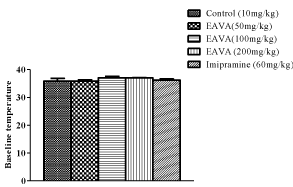
Figure 4: Effect of Ethyl Acetate fraction of Vernonia Amygdalina, EAVA
administration in Reserpine-induced Hypothermia. The results are expressed
as means ± SEM (n=6). Data were analyzed using One-way ANOVA followed
by Newman-Keuls’ post hoc test.
Effect of Ethyl acetate fraction of Vernonia amygdalina on Reserpine-induced hypothermia
As shown in Table 3, there were significant (p<0.05) differences in the EAVA 200mg/kg and Imipramine (60mg/kg) when administered groups with the control group at 3 hours and 4 hours.
Group
Dose
1 hour
2 hours
3 hours
4 hours
Control
10ml/kg
34.3±0.48
35.08±0.24
33.4±0.44
33.14±0.30
EAVA
50mg/kg
36.32±0.48
35.84±0.37
34.02±0.33
33.2±0.10
EAVA
100mg/kg
35.92±0.43
34.84±0.36
33.96±0.41
33.1±0.29
EAVA
200mg/kg
35.84±0.74
36.44±0.42
35.16±0.32*
34.74±0.41*
Imipramine
60mg/kg
35.5±0.57
36.26±0.26
35.1±0.29*
36.2±0.85*
Table 3: Effect of Ethyl Acetate fraction of Vernonia Amygdalina, EAVA administration in Reserpine-induced Hypothermia. The Results were expressed as means ± SEM (n=6). Data were analyzed using One-way ANOVA followed by Newman-Keuls’ post hoc test. *p<0.05 compared with the control.
Effect of Ethyl acetate fraction of Vernonia amygdalina activities on Open Field Test
As shown in Figure 5, One-way ANOVA revealed that there is no significant difference in the number of line crossed in animals treated with EAVA and Imipramine (60mg/kg) when compared with the control group.
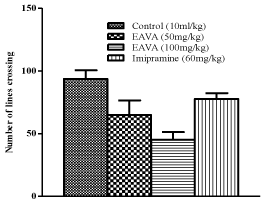
Figure 5: Effect of Ethyl Acetate fraction of Vernonia Amygdalina, EAVA
administration on number of line crossing in Open Field Test (OFT). The
results are expressed as means ± SEM (n=6). Data were analyzed using
One-way ANOVA followed by Newman-Keuls’ post hoc test.
Involvement of monoaminergic system on immobility in antidepressant-like activities of Ethyl acetate fraction of Vernonia amygdalina in Tail Suspension Test
Mechanism of action of antidepressant activity of Vernonia amygdalina was investigated using Tail Suspension Test. As shown in Figure 6, One-way ANOVA revealed that the pre-treatment of mice with prazosin, an alpha-1-adrenergic receptor antagonist (1mg/ kg i.p.), sulpiride, a dopamine D2 receptor blocker (50mg/kg i.p.) and metergoline, a 5HT2 receptor antagonist (4mg/kg i.p.) significantly increased the immobility time when compared to EAVA (100mg/kg).
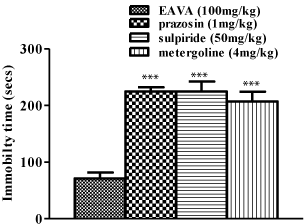
Figure 6: Effect of Ethyl Acetate fraction of Vernonia Amygdalina, EAVA
administration and monoamine antagonists on immobility in Tail Suspension
Test in mice. The results were expressed as means ± SEM (n=6). Data were
analyzed using One-way ANOVA followed by Newman-Keuls’ post hoc test.
*p<0.001 compared with the control.
This study showed for the first time that Vernonia amygdalina have antidepressant-like properties in mice when accessed in forced swim test, tail suspension tests, open field test and reserpine-induced depression tests.
Phytochemical screening from this study showed that VA is rich in flavonoids and alkaloids and these two constituents of VA are rich in antioxidant activity. It has been shown that administration of flavonoids exerted significant antidepressant-like effect in chronically mildly stressed rats, possibly mediated by serotonergic activation [10].
Behavioral study has been shown to play an important part in the evaluation and development of antidepressant [11]. Forced Swimming Test (FST) and Tail Suspension Test (TST) are the two vital behavioral models widely and routinely used for screening new antidepressant compounds. The immobility displayed by animals subjected to an unavoidable and inescapable stress that characterizes antidepressant models have been hypothesized to reflect behavioral despair that also may reflect depressive disorder in human. Our study shows that oral administration of Vernonia amygdalina produced a significant decreased immobility time in forced swimming test and tail suspension test which was similar to the action of imipramine used as a standard drug. This observed similarity indicates its antidepressant-like activity.
In this study, two fractions of Vernonia amygdalina was used viz. the methanol and ethyl acetate extracts. Since it not known anywhere as to which compound found in the plant material possess antidepressant properties, we decided to employ the use of fractions that contains different classes of compounds. Methanol is an amphiphilic compound, which extracts both polar and non-polar components of a plant material, while ethyl acetate extracts only polar components. We observed similar responses in reduced immobility time between the same doses of the different fraction of Vernonia amygdalina used. This suggests that the major antidepressant constituent of Vernonia amygdalina may be found in the ethyl acetate fraction, which may be polar compounds. On this basis, further studies were conducted using the ethyl acetate fraction of Vernonia amygdalina.
Reserpine can irreversibly block the vesicular monoamine transporter and inhibit the vesicular uptake of monoamines, such as 5-HT, NE, and DA, the depletion of monoamine stores may stimulate the re-uptake of monoamines and produce ptosis, diarrhea and hypothermia [12]. Reversal of the reserpine-induced behavioral signs by Vernonia amygdalina indicates that it may have acted by antagonizing the aforementioned effects of reserpine thereby increasing the amount of monoamines in the synaptic clefts.
In interpreting antidepressant-like effect of any test substance based on swimming performance and exploratory behavior of rodents in either FST or TST, it is well known that false positive results can be obtained for agents that stimulate locomotor activity [13]. Agents like amphetamine and anticholinergic which enhance locomotors activity or cause hyperkinesias in Open Field Test (OFT) to produce false positive results in FST and TST [13]. Hence the need of OFT as a paradigm to eliminate the bias that anti-immobility effect could be associated with hyperkinesias [14]. The observation that VA did not increase the number of lines crossed in the open field test eliminates exertion of psycho-stimulant-like action and confirms the assumption that antidepressant-like effect of the extract in the TST and FST is specific. Conversely, VA showed no sign ificant reduction in the number of line crossed though 100mg/kg had a reduced line crossing indicating non-sedative effect at this dose.
The monoamine hypothesis of depression predicts that the underlying pathophysiological basis of depression is the depletion in the levels of serotonin, norepinephrine, and/or dopamine in the central nervous system. This hypothesized pathophysiology appears to be supported by the mechanism of action of antidepressants: agents that elevate the levels of these neurotransmitters in the brain have been shown to be effective in the alleviation of depressive symptoms [15].
This study shows that VA reduced immobility. However, this reduced immobility was reversed when animals were pre-treated with metergoline, a non-selective 5HT2 receptor antagonist. Therefore, it may possibly produce its antidepressant effects through interaction with serotonergic system.
In line with this, pre-treatment with prazosin, an alpha1- adrenergic receptor antagonist reversed the reduced immobility that was observed when VA was administered alone in TST paradigm. This result indicates that VA may exert its effect in TST model by interacting with alpha1-adrenoceptors.
Also, the dopaminergic system has been implicated in regulation of mood. Since dopamine is the major neurotransmitter involved in reward pathway, it has been proposed that an increase in dopaminergic neurotransmission might counteract the anhe donic effect, which is a prominent symptom of depression [16]. The observed reversal in the reduced immobility that sulpiride, a dopaminergic (D2) antagonist showed in the Tail suspension test probably suggests the involvement of dopaminergic system in the potentiating of the antidepressant-like activities of VA.
Conclusion
This study has shown that Vernonia amygdalina possess antidepressant-like effect in Forced Swimming Test, Tail Suspension Test and reserpine-induced depression which is not due to the effect of psycho-stimulant and this may be mediated through serotonergic, noradrenergic and dopaminergic system. Therefore, Vernonia amygdalina demonstrate significant antidepressant-like effects. However, further work needs to be done to ascertain its mechanisms of action.
References
- Takeshima T. [Expectation for JSPN's contribution following revision of General Principles for Suicide Prevention Policy]. Seishin Shinkeigaku Zasshi. 2014; 116: 670-676.
- Ijeh II, Ejike CECC. Current perspectives on the medicinal potential of Vernonia amygdalina Del. J Med Plant Res. 2011; 5: 1051–1061.
- John K. Medicinal Plants of East Africa. 3rd edn. Nairobi, Kenya: University of Nairobi Press. 2009.
- Egedigwe CA. Effect of dietary incorporation of Vernonia amygdalina and Vernonia colorata on blood lipid profile and relative organ weights in albino rats [Thesis]. Department of Biochemistry, MOUAU, Nigeria. 2010.
- Erasto P, Grierson DS, Afolayan AJ. Evaluation of Antioxidant activity and the fatty acid profile of the leaves of Vernonia amygdalina growing in South Africa. Food Chemistry. 2007; 104: 636–642.
- Imoru JO, Oyemitan IA, Ilesanmi OR. Anxiolytic, Sedative and Hypothermic Effects of Aqueous Leaf Extract of Vernonia amygdalina Del. (Asteraceae) in Albino Mice. British Journal of Pharmaceutical Research. 2014; 4: 2210-2225.
- Holden C. A pivotal year for lab animal welfare. Science. 1986; 232: 147-150.
- Porsolt RD, Anton G, Blavet N, Jalfre M. Behavioral despair in rats: a new model sensitive to antidepressant treatments. Eur J Pharmacol. 1978; 47: 379-391.
- Steru L, Chermat R, Thierry B, Simon P. The tail suspension test: a new method for screening antidepressants in mice. Psychopharmacology (Berl). 1985; 85: 367-370.
- An L, Zhang YZ, Yu NJ, Liu XM, Zhao N, Yuan L, et al. Role for serotonin in the antidepressant-like effect of a flavonoid extract of Xiaobuxin-Tang. Pharmacol Biochem Behav. 2008; 89: 572-580.
- Yu S, Holsboer F, Almeida OF. Neuronal actions of glucocorticoids: focus on depression. J Steroid Biochem Mol Biol. 2008; 108: 300-309.
- Bourin M, Poncelet M, Chermat R, Simon P. The value of the reserpine test in psychopharmacology. Arzneimittelforschung. 1983; 33: 1173-1176.
- Bourin M, Fiocco AJ, Clenet F. How valuable are animal models in defining antidepressant activity? Hum Psychopharmacol. 2001; 16: 9-21.
- Kwon S, Lee B, Kim M, Lee H, Park HJ, Hahm DH. Antidepressant-like effect of the methanolic extract from Bupleurum falcatum in the tail suspension test. Prog Neuropsychopharmacol Biol Psychiatry. 2010; 34: 265-270.
- Belmaker RH, Agam G. Major depressive disorder. N Engl J Med. 2008; 358: 55-68.
- D'Aquila PS, Collu M, Gessa GL, Serra G. The role of dopamine in the mechanism of action of antidepressant drugs. Eur J Pharmacol. 2000; 405: 365-373.